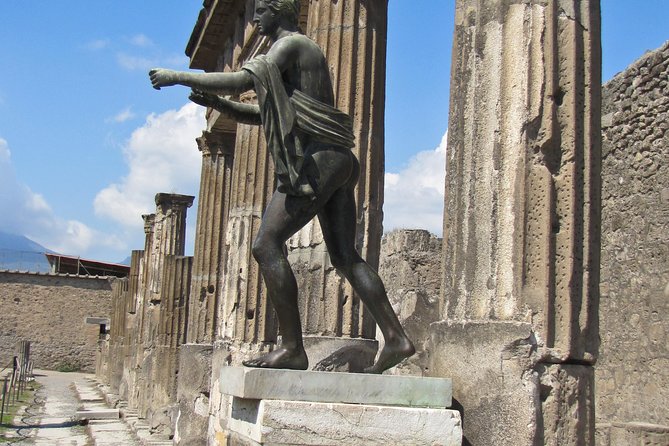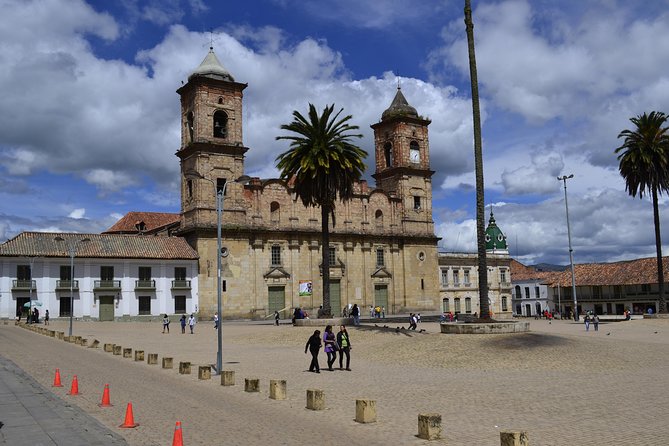Pompeii’s ancient ruins captivate history buffs worldwide. This private guided tour led by a certified archaeologist promises an immersive experience, exploring the city’s key landmarks before the 79 A.D. eruption. Visitors can skip the lines and explore the daily lives of Romans, from the Temple of Apollo to the House of Menander. With in-depth commentary and priority access, this 3-hour tour offers a must-do opportunity to uncover the secrets of one of the world’s best-preserved archaeological sites. What insights await those who embark on this journey through Pompeii’s past?
Key Points
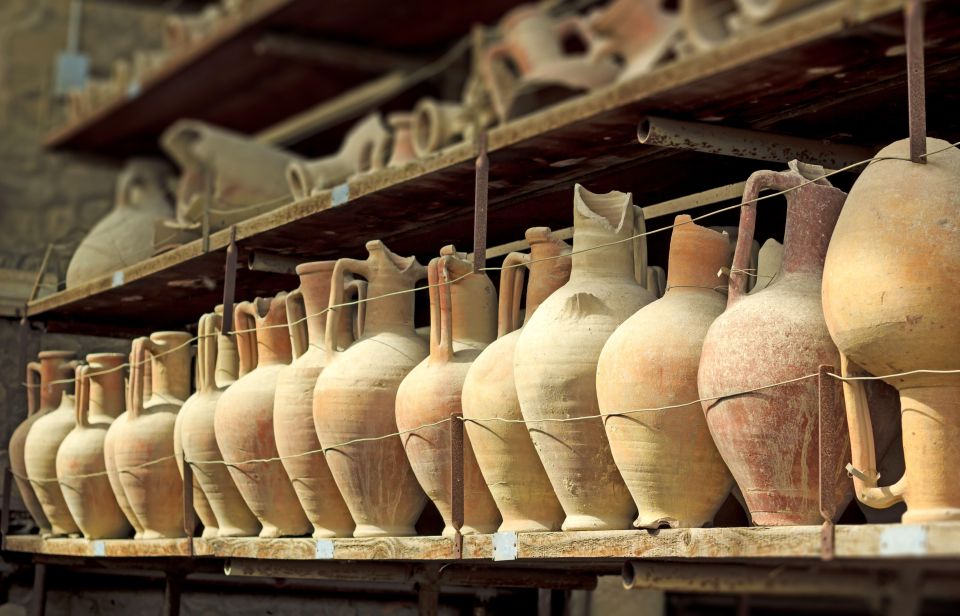
- This private guided tour of Pompeii lasts 3 hours and provides skip-the-line admission with a certified archaeologist-guide.
- The tour covers key historical sites, including the Temple of Apollo, Forum, Basilica, and House of Menander.
- Guests gain an in-depth understanding of how ancient Romans lived before the Mount Vesuvius eruption in 79 A.D.
- The tour starts at the Porta Marina Superiore entrance and ends at the Scavi di Pompei ticket office.
- This is a must-do experience for those interested in archaeology, history, or exploring an iconic Italian destination.
It's also worth checking out some other tours and experiences nearby.
Tour Overview
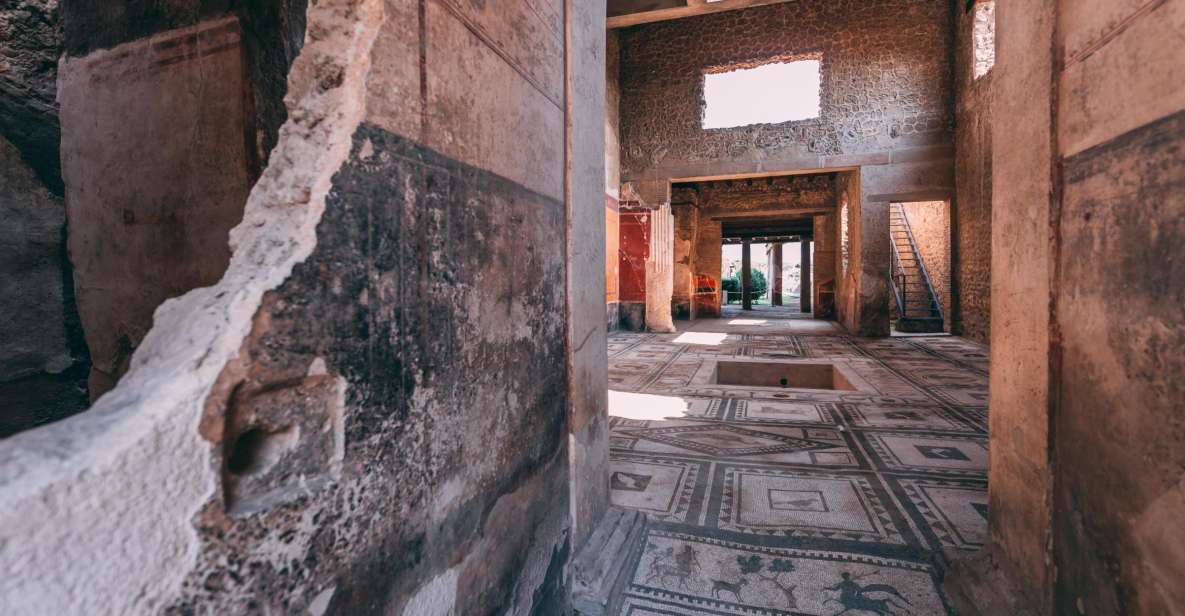
This private guided tour of the ancient city of Pompeii lasts 3 hours and includes skip-the-line admission.
Travelers will visit the highlights of Pompeii with a certified archaeologist-guide, including the Temple of Apollo, Forum, Basilica, House of Menander, Forum Baths, Lupanare, House of the Faun, Large Theatre, and Amphitheater.
They’ll experience how the Romans lived before Mount Vesuvius erupted in 79 A.D., making this one of the best archaeological sites in the world.
The tour starts at the Porta Marina Superiore entrance and ends at the Scavi di Pompei ticket office.
Comfortable shoes are recommended, and pets and umbrellas aren’t allowed.
Itinerary
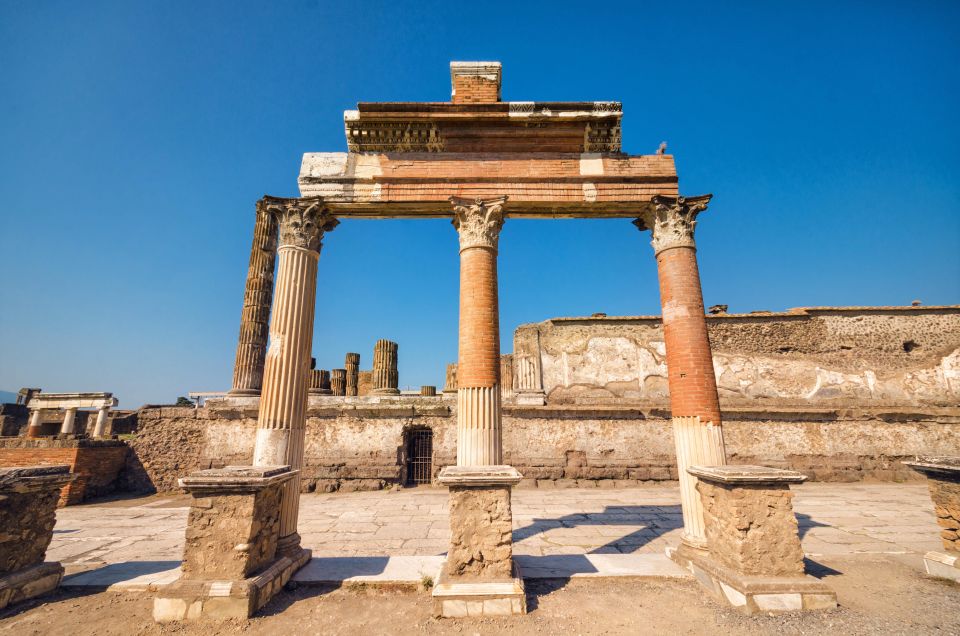
The tour begins at the Porta Marina Superiore entrance in Pompeii and covers the city’s key historical sites, including the Temple of Apollo, Foro Civile di Pompei, Basilica, House of Menander, Forum Baths, Lupanare, House of the Faun, Large Theatre, House of the Vettii, and the Amphitheater of Pompeii, before ending at the Scavi di Pompei ticket office. Along the way, you’ll discover how the ancient Romans lived before Mount Vesuvius’ catastrophic eruption in 79 A.D. To help you visualize the sites, here’s a table outlining the key stops:
| Site | Description |
|---|---|
| Temple of Apollo | One of Pompeii’s most important religious sites |
| Foro Civile | The civic center and heart of ancient Pompeii |
| Basilica | An impressive public building and law court |
| House of Menander | A well-preserved example of a wealthy Roman home |
Highlights
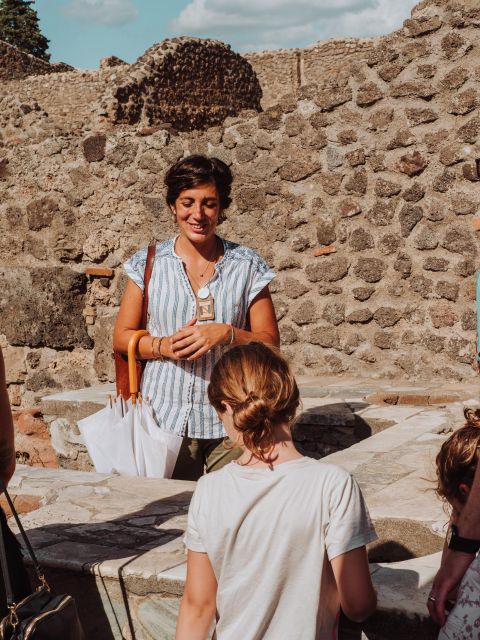
One of the highlights of this private tour is seeing one of the best archaeological sites in the world with a knowledgeable archaeologist-guide.
Visitors will experience how Romans lived before Mount Vesuvius erupted in 79 A.D., exploring key sites like the Temple of Apollo, Forum, Basilica, House of Menander, and more.
The tour provides an in-depth look at Pompeii’s rich history and well-preserved ruins, offering a unique opportunity to step back in time.
The expert guide will bring the ancient city to life, sharing fascinating insights and details that bring the past to life.
This is a must-do experience for anyone interested in archaeology, history, or simply exploring one of Italy’s most iconic destinations.
Temple of Apollo
Starting the Pompeii tour, visitors explore the Temple of Apollo, one of the city’s most prominent religious structures. This Doric-style temple, dating back to the 2nd century BC, stood at the northern end of the Forum and was dedicated to the god Apollo.
| Feature | Description |
|---|---|
| Architecture | Doric columns, portico, and raised podium |
| Statues | Bronze statue of Apollo in the cella |
| Altars | Multiple altars for religious rituals |
The temple’s grand scale and central location demonstrate the importance of Apollo’s worship in Pompeii. Visitors can envision the bustling religious activities that once took place here, providing a glimpse into the daily life of ancient Romans.
Foro Civile Di Pompei
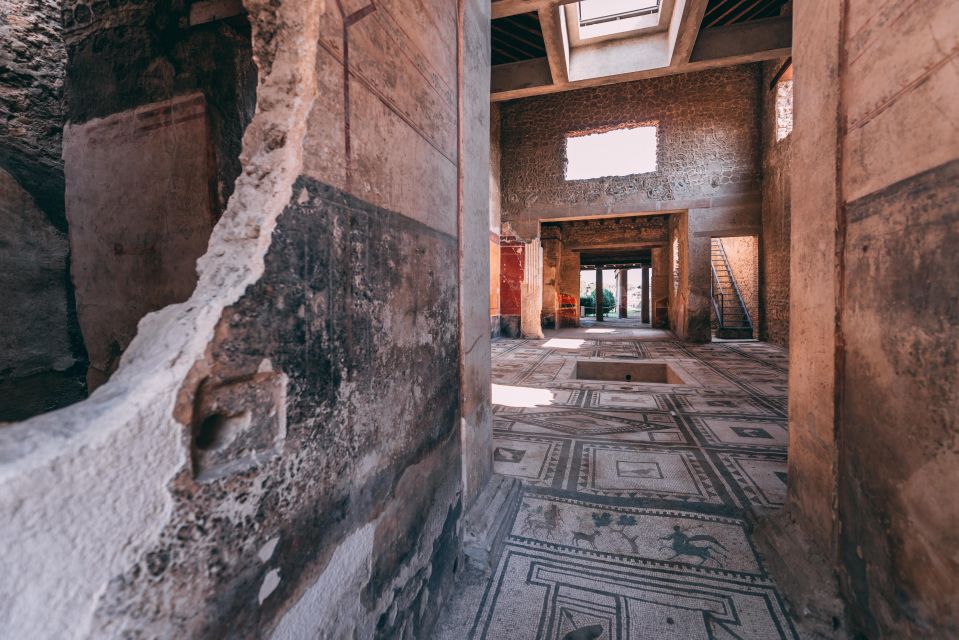
Next, visitors explore the Foro Civile di Pompei, the main civic center and heart of ancient Pompeii. This expansive plaza, dating back to the 2nd century BC, served as the commercial, political, and social hub of the city.
Here, locals and visitors alike would gather to conduct business, attend public events, and socialize.
The Foro features the remains of the Basilica, an impressive civic building that once housed the law courts and administrative offices. Nearby, the Temple of Jupiter dominates the northern end of the plaza, while the Curia, or senate house, can be found at the southern end.
This lively public square offers a glimpse into the bustling daily life of ancient Pompeii.
House of Menander
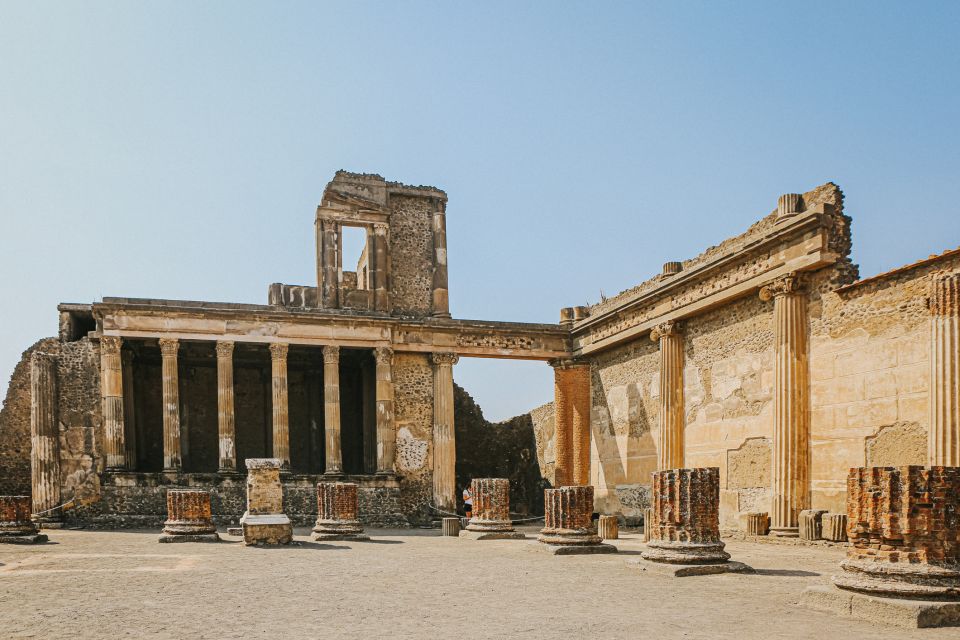
The grandeur of the House of Menander captivates visitors, offering a glimpse into the lavish lifestyle of a wealthy Pompeiian family before the fateful eruption of Mount Vesuvius. As one of the largest and most impressive private residences in Pompeii, the house boasts an array of well-preserved mosaics, frescoes, and architectural features that showcase the opulence of ancient Roman society. Visitors can admire the intricate floor mosaics, the elegant peristyle courtyard, and the richly decorated triclinium, where the family would have hosted lavish dinner parties. The House of Menander stands as a testament to the sophistication and splendor of Pompeiian culture, forever frozen in time by the devastating volcanic event.
| Features | Description | Significance |
|---|---|---|
| Mosaics | Intricate floor mosaics depicting mythological scenes | Showcase the wealth and artistic sophistication of the owners |
| Frescoes | Vibrant wall paintings adorning the rooms | Provide insight into the aesthetic preferences and daily life of the inhabitants |
| Architecture | Peristyle courtyard and triclinium | Reflect the architectural styles and social customs of ancient Roman elite |
Lupanare
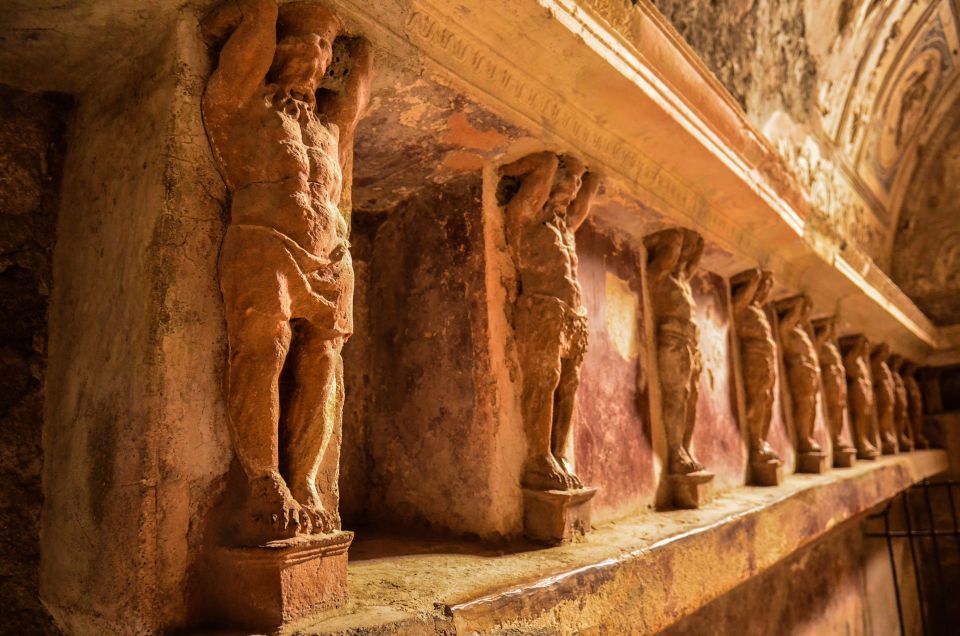
From the refined elegance of the House of Menander, we now turn our attention to the Lupanare, Pompeii’s notorious brothel that offers a stark contrast to the city’s more prestigious structures.
This two-story building, with its distinct frescoes and graffiti, provides a fascinating glimpse into the seedier side of Roman life.
Visitors can explore:
- The ground floor, where the actual brothel was located, with small rooms that once housed sex workers.
- The upper level, which served as living quarters for the hotel’s proprietors.
- Explicit frescoes that adorned the walls, highlighting the Lupanare’s unsavory purpose.
- Graffiti left by past patrons, offering a rare first-hand account of the brothel’s activities.
Amphitheater of Pompeii
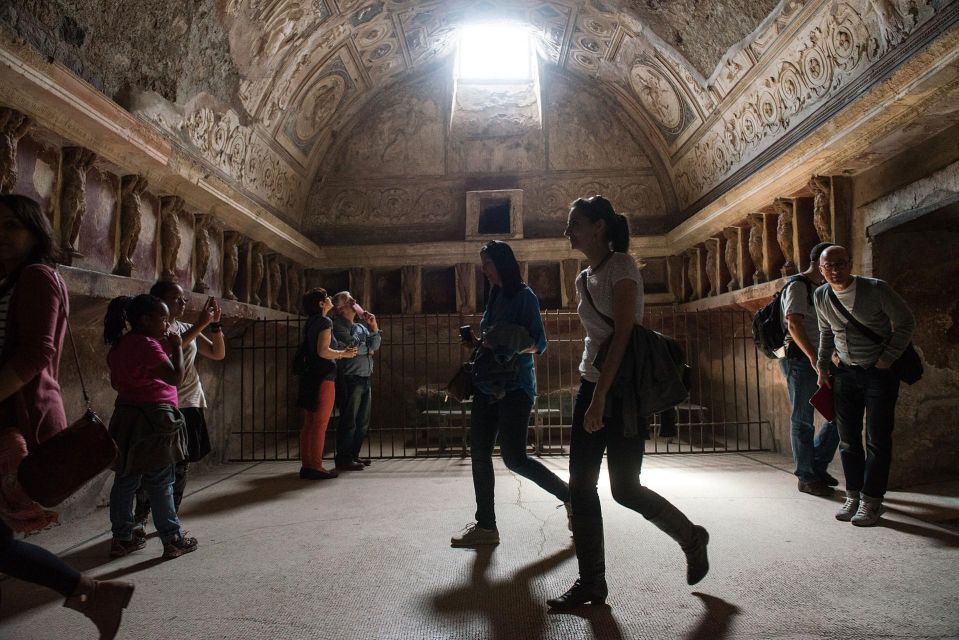
One of the most impressive structures in the ancient city of Pompeii is the Amphitheater, the oldest known permanent stone amphitheater in the world dating back to 70 B.C. It could seat up to 20,000 spectators and was used for gladiator fights, animal hunts, executions, and other public events. The Amphitheater features a distinctive elliptical shape and is remarkably well-preserved, offering visitors a glimpse into the thrilling entertainment of ancient Roman life. As part of the private tour, guests will have the opportunity to explore this iconic landmark and learn about its rich history and cultural significance.
| Feature | Description |
|---|---|
| Capacity | 20,000 spectators |
| Construction | Permanent stone structure |
| Opened | 70 B.C. |
| Events | Gladiator fights, animal hunts, executions |
Here's a few more nearby tours and experiences we think you'll like.
- Naples Underground Spanish Quarters
- Pompeii Vesuvius Day Trip From Naples+Italian Light Lunch
- From Naples: Pompeii Entrance & Amalfi Coast Tour With Lunch
- Day Trip From Naples: Amalfi Coast Tour Including Ravello
- Positano, Amalfi and Ravello Group Tour From Naples
- Day Tour of Capri Island From Naples With Light Lunch
Frequently Asked Questions
Is Photography Allowed Throughout the Tour?
Yes, photography is generally allowed during the tour. However, visitors should be respectful and avoid using flash, as it can damage the delicate ancient structures. Some areas may have restrictions, so participants should follow the guide’s instructions.
Can We Stop for a Lunch Break During the Tour?
The tour does not include a scheduled lunch break. However, participants are free to take breaks as needed during the 3-hour tour to grab a bite to eat at their own expense.
How Much Time Is Allocated for Each Site Visited?
The tour allocates approximately 20-30 minutes per key site visited, allowing ample time to explore the highlights of ancient Pompeii. The duration of the tour is 3 hours in total.
Are There Any Restrictions on the Type of Clothing Allowed?
The tour does not have any specific clothing restrictions, though comfortable shoes are recommended. Visitors should dress appropriately for an outdoor, walking tour of an archaeological site in a potentially warm Mediterranean climate.
Can We Make Changes to the Itinerary During the Tour?
The tour itinerary can be adjusted during the tour, but it’s best to discuss any changes with the guide beforehand. They’ll work to accommodate reasonable requests while ensuring the key highlights are covered within the allotted time.
Not for you? Here's more of our most recent tour reviews happening neaby
- Dolphin and Manatee Boat Tour in 10,000 Islands NWR
- Make Neapolitan Pizza With A View Of Naples Like No Other
- Everglades Kayak Safari Adventure Through Mangrove Tunnels
- Naples: Escape Tour – Self-Guided Citygame
- Capri, Sorrento and Pompeii – One Day Tour From Naples
- Naples: Authentic Italian Pizza-Making Workshop With Drink
- Private Transfer Car From Naples Train Station to the Center
- Visit Pompeii Sorrento Positano From Naples
- Naples: Margherita Pizza Cooking Class and Lunch
- From Naples or Herculaneum: Half-Day Tour in Herculaneum
- Amalfi Ravello Positano From Naples
- Naples: Hop-on Hop-off Bus Tour 24-Hour Ticket
- Private Sailing Tour Through the Ten Thousands Islands
- Private Transfer Minivan From Naples Train Station to Center
- The Best Transfer From Naples to Sorrento
Recap
This private guided tour of Pompeii led by a certified archaeologist offers a unique opportunity to explore the ancient city’s key historical sites and gain a deeper understanding of Roman life before the catastrophic eruption of Mount Vesuvius.
With skip-the-line access, visitors can enjoy this world-renowned archaeological destination and uncover the mysteries of Pompeii’s past, making it a must-do experience for history enthusiasts.

